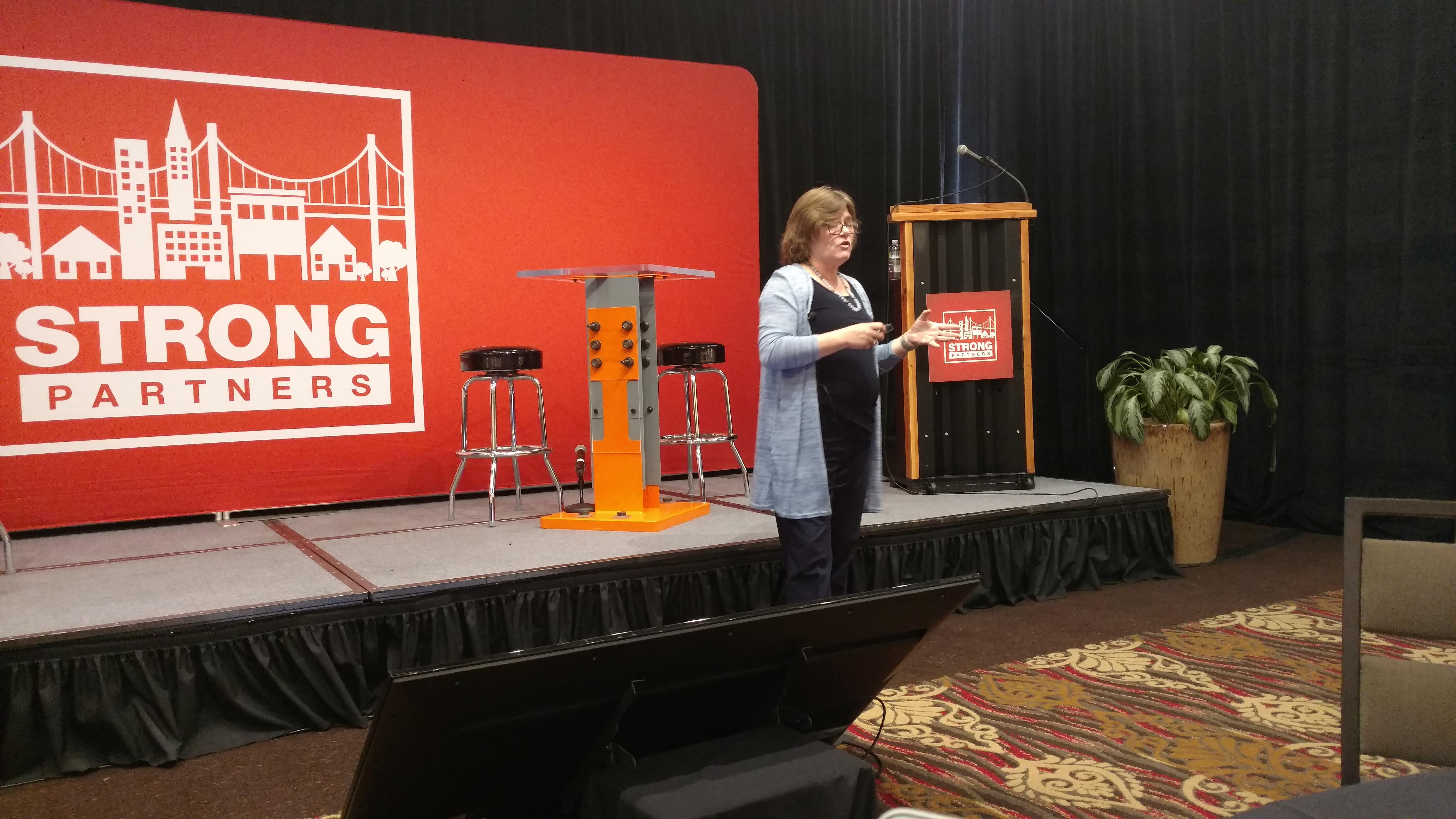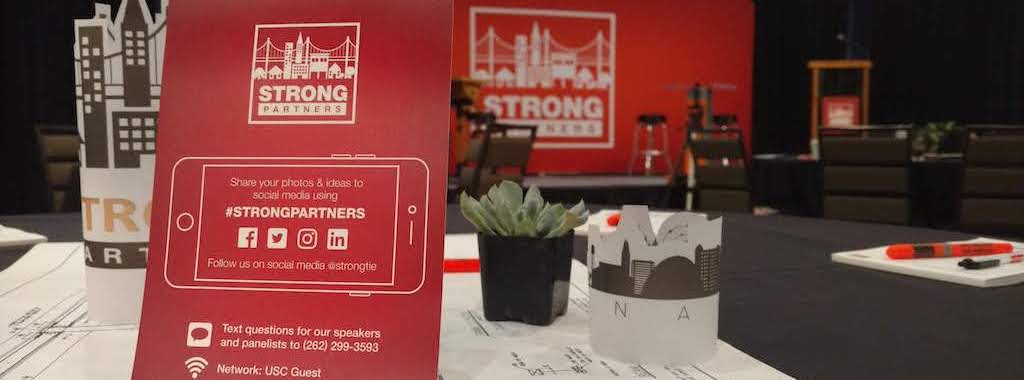Have you ever stopped to think about how much time you spend in a building? You probably spend your day inside your home, school, or office and then stop by the coffee shop, grocery store, or mall. There is a statistic from the Environmental Protection Agency that estimates most people spend close to 90% of their lives inside a building. With all that time inside of a structure, how often do you stop and think about how safe that building is, especially if you live in an earthquake region? And what about the whole community of buildings, and how we would be able to continue living our lives if a big earthquake hit and we were able to survive . . . but had no buildings left that were safe to live or work in? This raises the question of how resilient we would be after an earthquake, how quickly we would be able to recover and resume normal lives after a catastrophic earthquake. For many cities around the world who have suffered through large earthquakes and hurricanes, the answer has been not very quickly at all, with some affected cities estimated as taking as long as 50–100 years truly to recover. We know a big earthquake is coming to Southern California, so what can we do? At Simpson Strong-Tie, we are helping lead the research and innovation to make sure buildings and communities can stay safe in the next earthquake.
We have a long history of engineering expertise, jobsite experience and unmatched partnerships within the construction industry, as well as a fundamental belief of doing what’s right. Our Southwest branch in Riverside had the idea of creating an industry event that focused on how all of us can work together to build stronger, more resilient communities. This idea grew into the creation of the Strong Partners SoCal Seismic Symposium, which took place on September 27 in downtown Los Angeles. The Strong Partners symposium featured top earthquake speakers discussing why it’s important that we make our communities more resilient, and featured expert panels discussing retrofit case studies that utilized innovative Simpson Strong-Tie products to make the construction process efficient and economical. The event was a full house with close to 200 engineers, architects, building officials, inspectors, contractors and other building industry folks in attendance.
The event opened with host Annie Kao, Branch 22 field engineering supervisor at Simpson Strong-Tie, challenging the audience to consider a scenario where a massive 8.0 magnitude earthquake would lead to 0 lives lost, 0 families displaced from their homes, and 0 business disruptions. It was a bit of a far-fetched ideal, but could this lofty goal be someday achievable if we all partnered together to make resilience a reality? Next up was Janah Risha, the current president of the Structural Engineers Association of California (SEAOC) and principal at Risha Engineering, talking about important work that the organization is doing to strengthen building codes and design standards as well as to support state legislation to require cities to identify seismically vulnerable buildings and to raise the minimum building code standards. Next up was Jeff Ellis, past president of the Structural Engineers Association of Southern California (SEAOSC) and Simpson Strong-Tie Director of Codes and Compliance at Simpson Strong-Tie, who discussed what community resilience means and what resources are available at the local, state, and federal levels. Jeff then had the pleasure of introducing our morning keynote speaker, Dr. Lucy Jones.

Dr. Lucy Jones is also known as “The Earthquake Lady”, a nickname she earned as the premiere seismologist at the U.S. Geological Survey for over 30 years. She recently retired and founded the Dr. Lucy Jones Center for Science and Society and published the bestseller The Big Ones: How Natural Disasters Have Shaped Us (and What We Can Do About Them) this past April. She explored the big themes in her book during her keynote address, which touched on what human civilization has learned from centuries of experiencing natural disasters such as volcanic eruptions, torrential floods and massive earthquakes. Some of her big lessons included the surprising information that (1) you are probably going to live through the disaster; and (2) disasters are really about the recovery. Dr. Jones urged the audience to change their thinking about earthquake from thinking about how to survive, to how will we thrive and recover afterwards.
Following Dr. Jones’ keynote speech was a resilience discussion panel featuring Dr. Jones, Janah Risha, Jeff Ellis, and Marissa Aho, the Chief Resilience Officer for the City of Los Angeles. Annie Kao moderated the panel discussion which centered on how all of the different partners representing science, government, engineering, and industry can work together to spread the important message of resilience. Marissa then presented an update on the success of the City of Los Angeles in their mandatory retrofit ordinances for soft-story and non-ductile concrete buildings. To date, half of the dangerous soft-story buildings identified in Los Angeles have submitted plans for retrofit, with close to 10% already completing construction.
Following the morning speakers, the later morning and afternoon featured a series of panels that focused on case studies of real buildings that were successfully retrofit. The first was a soft-story retrofit panel moderated by Damon Ho, Simpson Strong-Tie engineering supervisor at Branch 22. Damon guided a conversation about soft-story ordinances, case studies, and best practices between Shahen Akelyan, Chief of High-Rise and Retrofit Programs for the City of Los Angeles Department of Building and Safety; Garrett Mills, principal at Taylor & Syfan Consulting Engineers; and Bill Kahikina, President of Bolt Down LA, a seismic retrofit construction company. The panel was able to show how approachable these types of projects are, how they can be done cost-effectively, and how using the Strong Frame special moment frame is an ideal choice for ease of construction and building performance. Bill spoke specifically about several soft-story retrofit projects he was able to complete successfully because of his partnership with Carlos Zarate, Branch 22’s Los Angeles territory manager. The second panel was led by Jeff Ellis and focused on resources available for residential home retrofit, an important topic as thousands of older homes in California built before 1979 are vulnerable. Glenn Pomeroy, the CEO of the California Earthquake Authority, a nonprofit earthquake insurance provider established by the state, discussed the Earthquake Brace + Bolt program, which provides grants of up to $3,000 to homeowners who want to upgrade their homes’ connection to the foundation. Glenn was joined by Colin Blaney, principal at Buehler Engineering and co-lead investigator for a new design prestandard called ATC-110 that’s researching ways to make retrofitting single-family homes simpler and more popular. Also on the panel was the contractor’s perspective provided by Ken Compton, program manager and inspector with Seismic Safety, an earthquake retrofit company in Southern California. The discussion laid great groundwork for the resources available to homeowners, contractors, and engineers and how straightforward and affordable it can really be to retrofit a home before a major earthquake occurs.
The third panel of the day was helmed by Jason Oakley, Simpson Strong-Tie senior field engineer for Southern California, and featured retrofit of a commercial concrete building. Simpson Strong-Tie’s concrete strengthening expert Aniket Borwankar, concrete field engineer from our Northern California branch, explained the concrete strengthening and repair process using fiber-reinforced polymers, code design requirements, and sample project types. Next up was a case study on an old concrete building in downtown Los Angeles presented by Omar Garza, principal with Nous Engineering and Chris De Letto, president and CEO of VaLetto Construction. Omar and Chris talked about how working with Simpson Strong-Tie Engineering and Simpson RPS Specialist Ian Murphy helped them restore and upgrade the existing concrete building and bring it up to the current city building requirements. Omar commented that he would be interested in utilizing the Simpson Strong-Tie FRCM (fabric-reinforced cementitious matrix) system in lieu of shotcrete walls in order to reduce wall thickness and weight future building projects. With the City of Los Angeles mandating retrofit of non-ductile concrete buildings within the next 25 years, there will be many opportunities for engineers and contractors to utilize the latest technologies for challenging projects.
A highlight of the event was the lunch keynote where Karen Colonias, CEO of Simpson Strong-Tie, discussed the company’s history as well as our vision for the future and our commitment to innovation and building resilient communities. Karen touched on our founder Barc Simpson’s 9 Principles of Doing Business and how doing the right thing and being innovative have always been at the heart of our company. She shared the remarkable partnerships that we’ve forged with Habitat for Humanity, Build Change, Cal Poly San Luis Obispo, and Washington State University as well as the impressive testing we’ve participated in, such as the world’s largest shake table test in Japan in 2008, which featured our Strong Frame special moment frame connections. Karen reiterated our company’s commitment to making communities stronger and more resilient in the face of natural disasters.
A huge event like this would not have been possible without the efforts and support of many. Simpson Strong-Tie senior leadership, the engineering team, sales team and training team all worked tirelessly to create an unforgettable experience for our attendees. Many attendees commented afterwards that the event was impressive and well-organized, had compelling content, and that they would encourage others in the industry to attend.
We hope this is just the first of many Strong Partner events that we can host to bring all our partners in the industry together. Ultimately this event was a great reminder that the work we do goes beyond designing and making products that can save lives, but also helps to build stronger, more resilient communities.
Want more? To watch highlights of the day, visit the Simpson Strong-Tie Facebook page for the recorded Livestream video of the event from September 27, or search social media for #strongpartners. Also, the Los Angeles Times wrote a great article about the hidden dangers of unretroffited homes using content from the Strong Partners Symposium that can be found here: http://www.latimes.com/local/lanow/la-me-ln-earthquake-homeowner-fix-20181018-story.html


